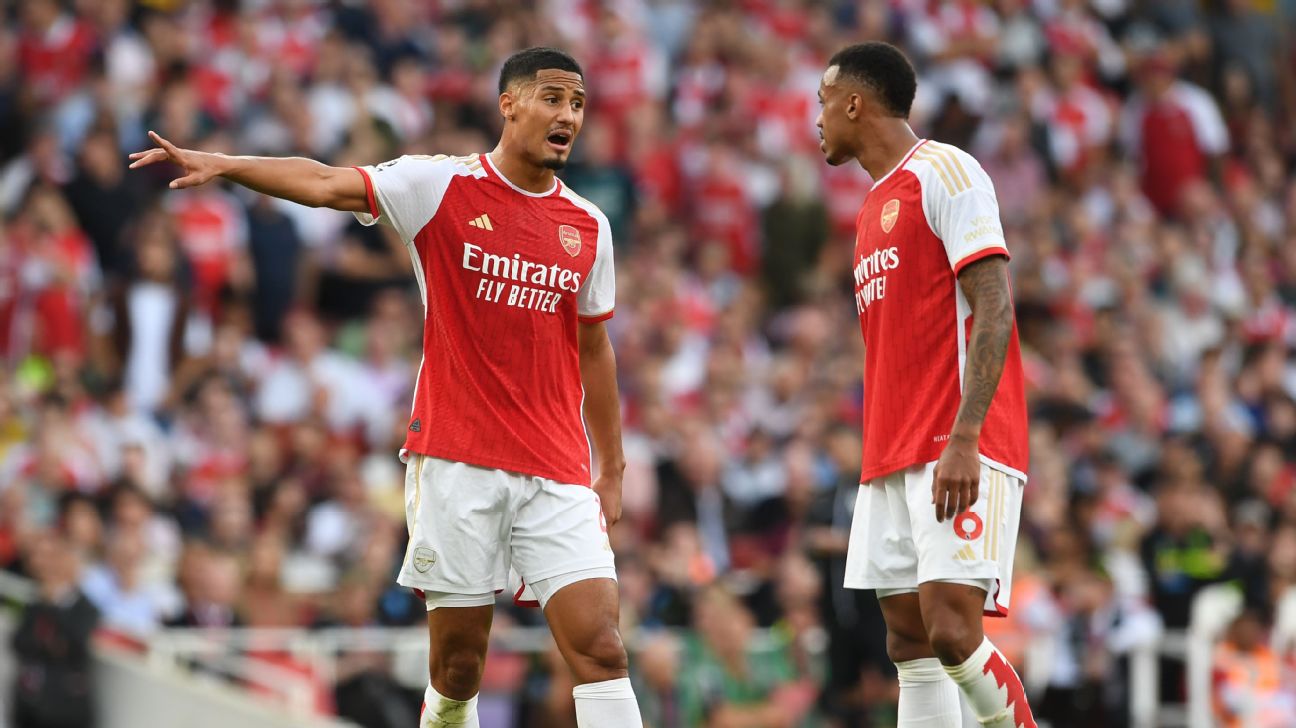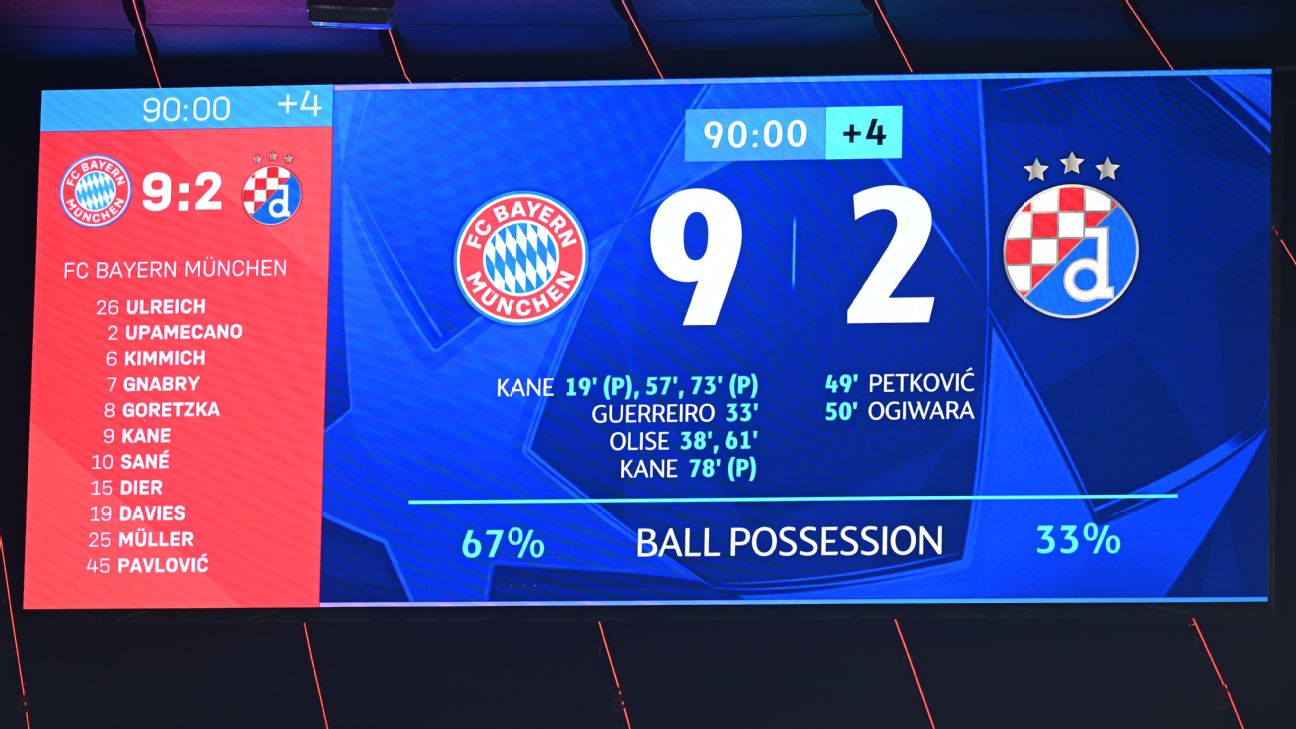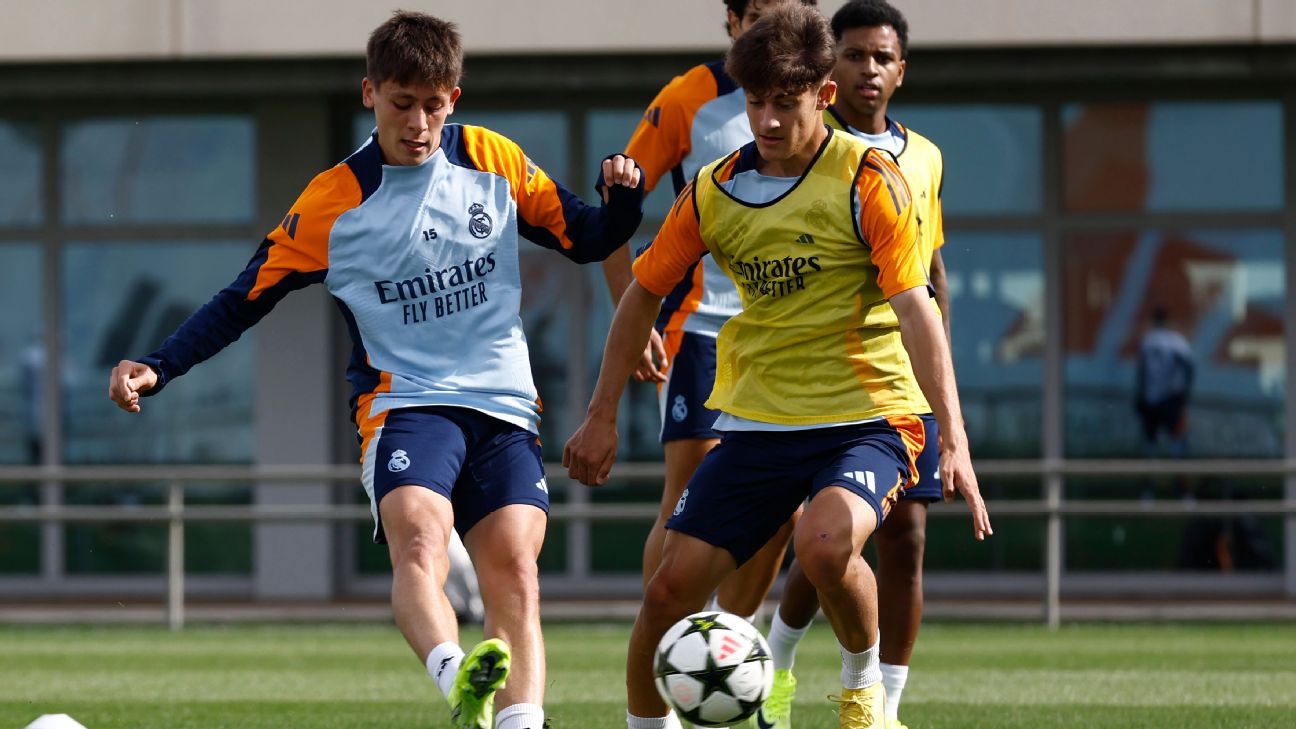We’re eight games into the Premier League season. Eight games — such a classic number. Everyone is always talking about who’s scored the most goals over the last eight games, who has the most points over the most recent eight-game stretch and what have you. Every good soccer fan knows how sacred the eight-match set is.
Turn that bad boy on its side, however, and you’ll see infinity. Eight is the atomic number for oxygen — can’t live without it. Everything you need to know about soccer exists within every eight-game sample.
Or not. Obviously not. And yet, since we’ve only seen eight games so far this season, we treat these eight games in a way that we would never treat any other eight-game stretch. And by that I mean: We simply just look at them and begin to make conclusions about the current state of teams and try to project out their futures.
So, before play begins this weekend and we move beyond the realm of the infinite and into the world of nine matches played, let’s take a look at how useful these eight games have been in the past, and then see if we can’t add in more matches to get a more complete picture of the state of the Premier League.
What do the first eight Premier League games show?
Over the past five Premier League seasons, the team in sole possession of first place after eight games has won the title… once. And that was Liverpool, who had won all eight matches in 2019-20 and were in the midst of arguably the best start to a season in the history of all of the major professional sports.
Manchester City did also win the title in 2018-19, but through eight matches, they were in a three-way tie for first with Liverpool and Maurizio Sarri’s Chelsea. If we award City with one-third of a title since they were in a three-way tie, then it averages out to about a quarter of the champions of the past five years being in first place at this point in the season.
However, the only title-winner to be outside of the top four at this point in the season was Manchester City in 2020-21. And the only team to be top of the table through eight matches and fall all the way out of the top four was Leicester City that same season.
As for the top-four race, it’s seen a higher hit rate recently. Looking through past seasons, there were 11 teams firmly in the top four through eight matches who eventually finished in the top four. That’s just slightly more than half of the 20 available slots.
Then there were eventual qualifiers Tottenham, who were in a tie with Brighton for fourth through eight matches in 2021-22. In 2019-20, Frank Lampard’s Chelsea were in a three-way tie for fourth with Crystal Palace and Leicester City. And the year before that, Tottenham were in a two-way tie with Arsenal. Awarding the same fractional qualifications as we did above, that brings the Champions league qualification rate slightly above 60% for the teams who were top four after eight matches.
The relegation race offers a similar sense of stability. In each of the past five seasons, at least one team in the bottom three after eight games has ultimately been relegated, while at least one team has also escaped relegation. Overall, eight of the 15 teams (53%) in the bottom three after eight games were sent down to the Championship.
Now, a chunk of that is self-fulfilling. If you’re in the top four after eight games, it means you have a lot of points compared to the rest of the league. And if you’re in the bottom three after eight games, it means you have very few points compared to the rest of the league. Regardless of the underlying quality of your team, more points through eight games make you more likely to finish high in the table and fewer points does the opposite. This, of course, is obvious to anyone with an elementary-level understanding of how to count up from zero.
Janusz Michallik debates whether Leroy Sane would want to return to the Premier League if Mohamed Salah leaves Liverpool.
But how about expected goals, or xG, the much more powerful indicator of team quality and future performance?
The ultimate title-winner has been the top team in non-penalty xG differential at even strength in three of the past five seasons. That was Man City, last year, the year before that and in 2018-19. They also had the best xG differential in 2019-20, when Liverpool went on their tear. As for 2020-21, the xG leader after eight games was, uh, Jose Mourinho’s Tottenham, who ultimately finished the season in sixth place. Perhaps we can chalk that up to the combined volatility of Mourinho’s dated managerial style and the COVID-season played in front of empty stadiums.
For the top-four race, the hit-rate improves upon just looking at points. A full 14 of the 20 teams in the top four of even-strength non-penalty xG differential ultimately ended up in the top four. That’s a 70% hit rate. At this point, it becomes easier to just list the teams who ultimately didn’t do it: Liverpool last season, Wolves and Man United (I don’t know, man) the season before that, Tottenham and Brighton in 2020-21 and Brighton in 2019-20.
At the bottom, though, xG hasn’t been any more useful than pure points in predicting the relegated teams through eight games. Eight of the 15 teams in the bottom three of xG differential were relegated — same as the teams in the bottom three by points. Even still, that shows the incredible utility of an aggregate, constantly updating statistic like xG.
While using points to predict table finish is somewhat self-fulfilling, xG doesn’t know anything about whether or not these teams have won games — it doesn’t even know which shots went into the goal. All it knows is the quality and quantity of the shots each team has allowed. Once the ball leaves the players foot, the algorithm stops caring — and it’s still identified the best teams in the league, the top-four finishes and the relegated sides at a pretty decent rate.
What does it mean for this season of the Premier League?
Here’s how the Premier League compares so far in 2023-24, by non-penalty xG differential at even strength:

Once again, Man City lead the way. Despite their loss to Arsenal — and their generally stuttering attack — they should be the favorites to win the league. And they still are, with most sportsbooks still favoring them over the field.
After that, though, the top-four doesn’t really look anything like the table. The three teams after City are all in eighth-place, or worse. Newcastle are eighth with 13 points, Chelsea are 11th with 11 and Everton are 16th on seven points.
So, what the heck is going on? Newcastle are pretty clearly just a very good team that hasn’t quite achieved results requisite to their performances. You don’t win a game 8-0 unless you have higher gear than most other clubs, and you don’t beat Paris Saint-Germain 4-1 if you’re not a Champions League-quality club. They’ve also done this while playing the second-hardest schedule in the league based on the average Stats Perform power rating of their opponents.
Everton and Chelsea, meanwhile, have played the easiest and second-easiest schedules, respectively, by that same metric. That helps explain why both teams have been able to out-create their opponents by such significant degrees. With a performance like that, it seems very unlikely that Everton will be relegated. As for Chelsea, they’ve probably dug themselves too big of a hole before their schedule hardens up, but it also wouldn’t be a shock if they continued to rise up the table as the season continues.
If you want that top four to make a little more sense: Liverpool and Everton are separated by 0.05 expected goals, and these models aren’t anywhere near precise enough to confidently separate teams by that small of a margin. So, basically, Liverpool are also a top-four team, both by the underlying numbers and points. They’ll likely be a top-four team come season’s end.
And what if we look beyond this season?
While the eight-game sample is not completely useless, every extra game reveals a tiny bit more info about each team.
Work from Elliott McKinley for the site American Soccer Analysis found that most of the major performance metrics — expected goals, shots, shots on target, goals, points — become more predictive of future performance as the season goes on. The predictive power of each metric (meaning, its correlation with future goals or points won) peaks right around the 15th game of every season. That’s mainly explained by the fact that A) 15 games is a big enough sample to be confident it’s saying something real about a team, and B) there are still 23 games left so a couple unlucky wins or lucky losses will come out in the wash. Thirty-five games into a season, we can be more confident about how good or bad a team is, but we can be less confident that it’ll show up in their points and goals totals over the tiny sample of the three games remaining.
Given all of that, what if we looked back at the past 15 games played by every ever-present Premier League team? We might be pulling in all kinds of faulty inputs — games with star players who left over the summer, games without star players who arrived over the summer, games managed by Frank Lampard — but perhaps it will provide more context for what we’ve seen over the first eight games of this season. After all, most teams are composed of mostly the same players as they were at the end of last season. Here’s how the 17 teams who were in the league in each of the last two seasons compare by non-penalty xG differential at even strength over their last 15 matches:

Looking at that, what might you infer? Newcastle might be the real deal, and Liverpool’s improvement extends back beyond the start of this season. Maybe Manchester City’s stuttering performance has lasted for longer than eight games? Maybe Manchester United aren’t quite as terrible as they’ve been so far this season?
Everton’s improvement under Sean Dyche has been, frankly, incredible — even if the results haven’t quite caught up with their improved performance yet. Although they’re in a tie for first, neither Arsenal’s nor Tottenham’s underlying performance hasn’t been close to title quality. And maybe Brighton’s attempt at crashing the top-four party isn’t likely to last for all that much longer.
Or maybe it will. At this point in the season, there’s plenty we know and plenty we don’t — roughly in equal measure.
Manchester City remain favorites, but not to the degree that they’ve been in the past. The second-best team in the league really might be Newcastle. Liverpool seem like they’ve re-established themselves as a clear top-four side. Arsenal’s title credentials could be flimsier than they seemed at this point last season. Tottenham probably still have a battle on their hands to stay in the top four. Everton should start to rise up the table at some point.
Those are all conditional statements, but they’re informed both by what happened this season and at the tail end of the last one. Sometimes, though, looking backward too far just confuses the picture even more. Manchester United and Chelsea? Yeah, we still don’t really know what’s going on over there.



